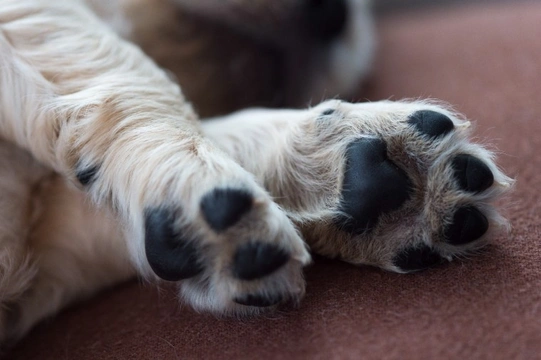
Five winter-specific paw problems in dogs you need to be alert to
We humans are of course rather more delicate than dogs in regards to our hands and feet, and dog’s paws are quite hardy as they’re made of tougher skin than our own feet and are designed to walk on hard or cold surfaces without being highly sensitive to damage.
However, this does not mean that such damage cannot occur, and some dogs are more prone to it than others. Dog owners should be alert to some of the winter-specific paw problems that dogs may develop, and in order to do this, you need to know what sort of paw issues can arise in colder weather, and why.
This article will tell you about five winter-specific paw problems in dogs you need to be alert to. Read on to learn more.
Chapping and cracking
You might well be one of the many people that suffer from dry, cracked or chapped lips in winter, or cracked and dry hands and fingers if you spend a lot of time outdoors without gloves on.
Dogs in general but particularly dogs that are finely built or very lean and that do not have much padding on their paws (like many sighthound breeds, including the whippet) can be prone to getting chapped or even cracked paws in winter too.
This can be very painful and is worsened by the fact that they have to walk on their paws to get about and so cannot ease the pressure on their paws if it affects more than one of them.
If your dog is prone to issues of this type, the best approach is to plan ahead to prevent them, which might involve using booties in cold weather to protect their paws, or if they’re not hugely delicate and this is a bit extreme, paw wax or a barrier cream applied before each walk instead.
Chemical burns
Chemical burns might seem like an unlikely risk for the average dog to come across, but this is actually a real risk to your dog’s paws in winter! How? Well, certain types of chemicals designed to melt or dissolve ice and snow or prevent wet areas from freezing in the first place can be found in everything from antifreeze to de-icer to commercial road grit, and even road salt or pure rock salt can cause chemical burns to paws.
This can be a real problem, as many dog owners have no choice but to walk their dog along a route that has been treated with products of this type in winter, and this means exposure of the paws to any number of potentially unknown products when you do.
Obviously the best approach is to try to avoid contact with such substances in the first place, but paw wax or barrier cream as mentioned above can help to reduce contact, and getting into the habit of washing your dog’s paws off in warm water (and drying them thoroughly) as soon as you get back home can help to reduce the risk.
Ingestion of toxins by licking the paws
Dogs have no concept of danger when it comes to things they eat and that might be toxic to them, but they can also accidentally ingest toxins simply by licking their paws clean… Paws which may have come into contact with any of the various substances mentioned above, including antifreeze, de-icer, and rock salt.
All of these things are toxic to dogs in different ways, and while poisoning isn’t a paw problem per se, it can result from licking the paws and so is well worth mentioning.
Frostbite caused by compacted ice and snow in paw pads and feathers
Frostbite in dogs can happen surprisingly quickly and even in situations that are common and normal for your dog and that you’ve undertaken with them every day with no problems before.
A dog’s individual toes are one of the most vulnerable areas of the body when it comes to frostbite, and this can develop if your dog has been outside in the cold for any length of time that results in them also becoming too cold, to the point that the body reduces circulation to the extremities to prioritise protecting the dog’s core.
Frostbite in dogs can occur in temperatures of freezing or lower, and the toes and paws are at risk of this. One particular problem to be alert to that can result in the development of frostbite in the paws even if the dog as a whole isn’t freezing cold is if balls of snow or ice compact and get stuck between the toes or the paw pad and the rest of the foot, which is most common in breeds with feathered feet.
Consider trimming heavy feathering just a touch if this becomes a problem, and check your dog’s paws upon returns from walks to remove any frozen ice balls. If you’re out with your dog for a long walk, check their paws over periodically during the walk too.
Cold or numb paws and injuries
Your dog’s paws and feet are more robust and cold-hardy than your own, but they’re still vulnerable to damage like cuts from sharp objects (that may be masked by snow) or punctures from things like thorns. However, cold paws and a generally cold temperature can actually mask such injuries, slow the rate of bleeding, and reduce the pain or discomfort they cause to your dog at the time too; all of which make them harder for you to spot.
Be aware of this and once more, check your dog’s paws over when you get home or during walks too if you’re out for a while.



